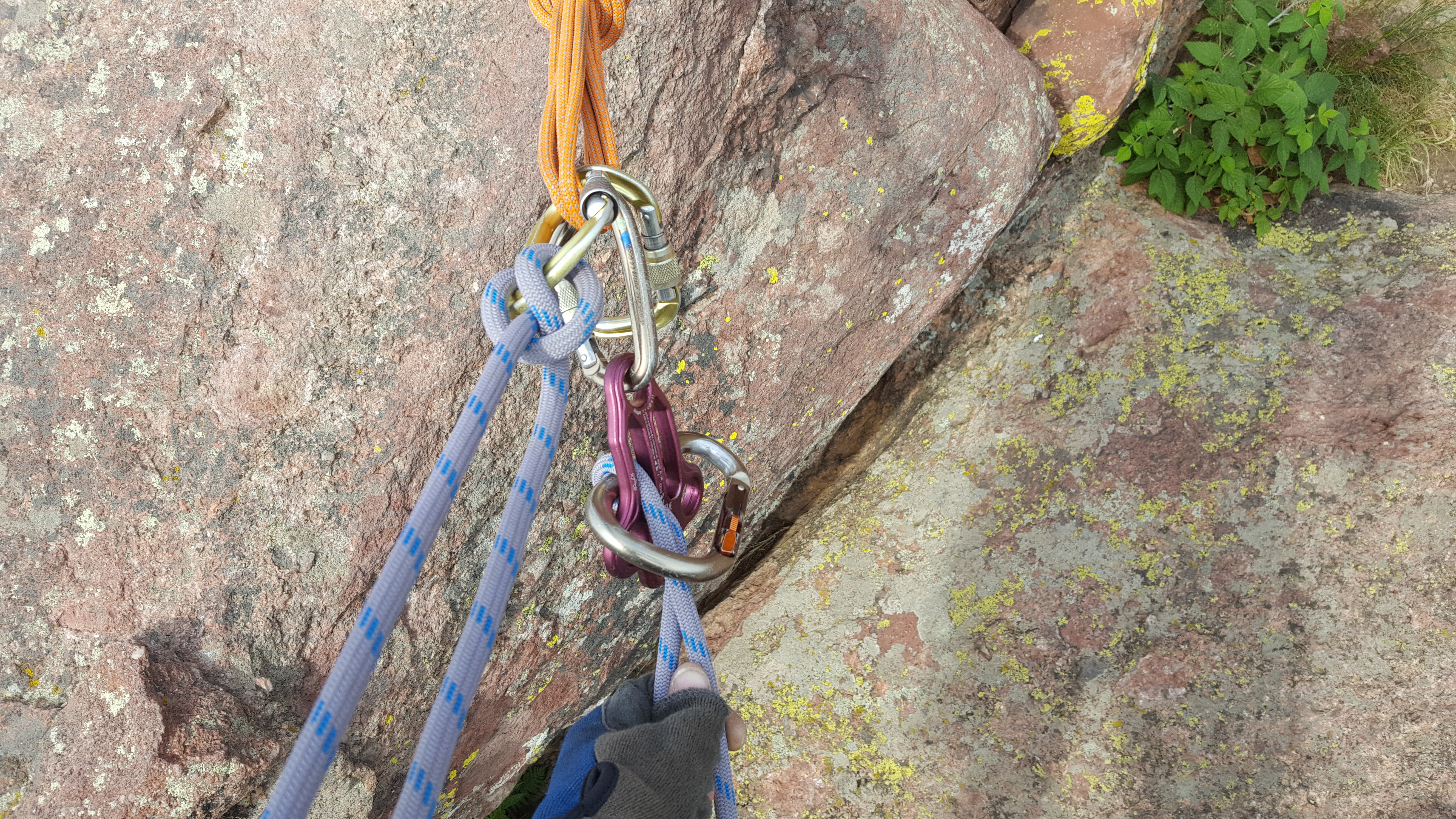ProView – Grivel Shuttle Belay Plate
There’s a wide range of ‘guide’ devices and plaquettes that are made for a solid top belay, and this summer I got to take the Grivel Shuttle for a test drive. After getting acquainted with it in my basement, I went into the field for a few trips to Boulder Canyon and the Flatirons.

The first things that are noticed about the Shuttle was its curved shape and the two eyes on the side of the device. The instructions that come with the device show the curve, along with which end of the device is “up,” as being useful for picking a speed on rappel, and I wondered if that would affect how well the device belayed.

The two eyes are listed as being used for climbers clipping in with tethers, or securing the device to several anchor points, combining the Shuttle into a belay plate and rigging plate for big walling. Personally, I never tested the multiple anchor points, always working off a single master point while belaying. As for helping with organizing at the anchor, I did find the additional eyes useful for hanging my pack on long multipitch routes without cluttering up the master point itself.

My usage was restricted to guiding and as I was leading every pitch, clipping a follower into the plate itself with a tether only made sense when transitioning into short roping or rappelling. Although not personally tested, I can see these being useful in big wall situations where a plate would be used, combining two pieces of kit into one. Belaying with the Shuttle I was pleased with its various orientations.

The larger triangular aperture at the bottom of the device was listed as a third option to run the rope through. It did pull far smoother than the tighter slots, but the shape of the aperture would cause the rope to sit funny in the slot and start to roll even on 10mm ropes, making it absolutely necessary on all ropes to clip the blocking carabiner around the load and brake strands as well if using this option. When using the main belay slots with a single rope I did find it pulled fairly well, although with some resistance that comes from the ninety degree angles on the sides of the slots. Many of the leading plates have curved edges to allow for a smoother belay and reduce wear from the brake strand. I did have to switch to using a larger blocking carabiner to get it around the lower eyes to safeguard against the aforementioned rolling on thinner ropes.

When using two ropes in parallel belay, the shuttle came pretty close to the leading belay plates on the market. Right off the bat I was surprised the Shuttle didn’t have the usual raised ridge between belay slots that allows for one rope to lock and the other to still be pulled through. Even without a noticeable ridge the Shuttle still allows the two ropes to run well independently even if one strand is weighted. I did have to flip the device over from what’s listed in the instructions, so that the blocking carabiner was on the convex side of the device, in order to reduce how hard I had to pull to keep up with quicker clients. When using the device oriented with the pointed ends of the slots under the brake strands the device bites exceptionally well, too well for thicker dry ropes on rock, but would clearly be the needed added security for thin, icy ropes to maintain the highest level of security. I did test this using a soaked 8mm cord during my initial vetting process and was pleased with how hard the device bit while loaded into the points.
My final note on the Grivel Shuttle is that the instructions for the device for lowering and rappelling seemed odd when compared to usage of other devices. Lowering is shown as simply setting the device with the load and brake strands switched from belaying. In my practice with the plate I found this to not offer enough friction for me to feel as if this made a good set up for lowering. However, setting it up as the more commonly used redirected plate worked quite well. As with any device, since climbing and mountain activities are inherently dangerous, it is vital to get proper instruction on the use of any new piece of gear, and to fully practice said techniques before employing them in the field.
All in all the Grivel Shuttle is a reliable belay plate. Its design allows for big wallers to combine pieces of kit to cut down on harness clutter, as well as offering the fast and light alpinist to have a solid belay on wet and icy ropes. The multiple orientations create some much-needed diversity in use for a single plate, allowing the leader to adapt to the speed of the situation that is not offered in the average belay plate.
Shop Grivel on Outdoor Prolink. Not a member? Apply today!
Sean Smith is your definitive climbing nerd. Whether it is about gear or techniques, or the geology and the history of a route, Sean eats it up and will talk your ear off about it, if you let him. Sean has over 5 years of indoor and outdoor guiding experience, having coached youth and adults, including several national qualifiers, and most recently working with Movement Climbing and Fitness as well as guiding for Denver Mountain Guiding. His favorite part of taking guests into the mountains is sharing hidden views in classic climbing spots. Sean always puts safety first, along with the enjoyment of his guests, striving to leave lasting memories and smiles, and inspiring climbers to look forward to their next objective. – Denver Mountain Guiding

